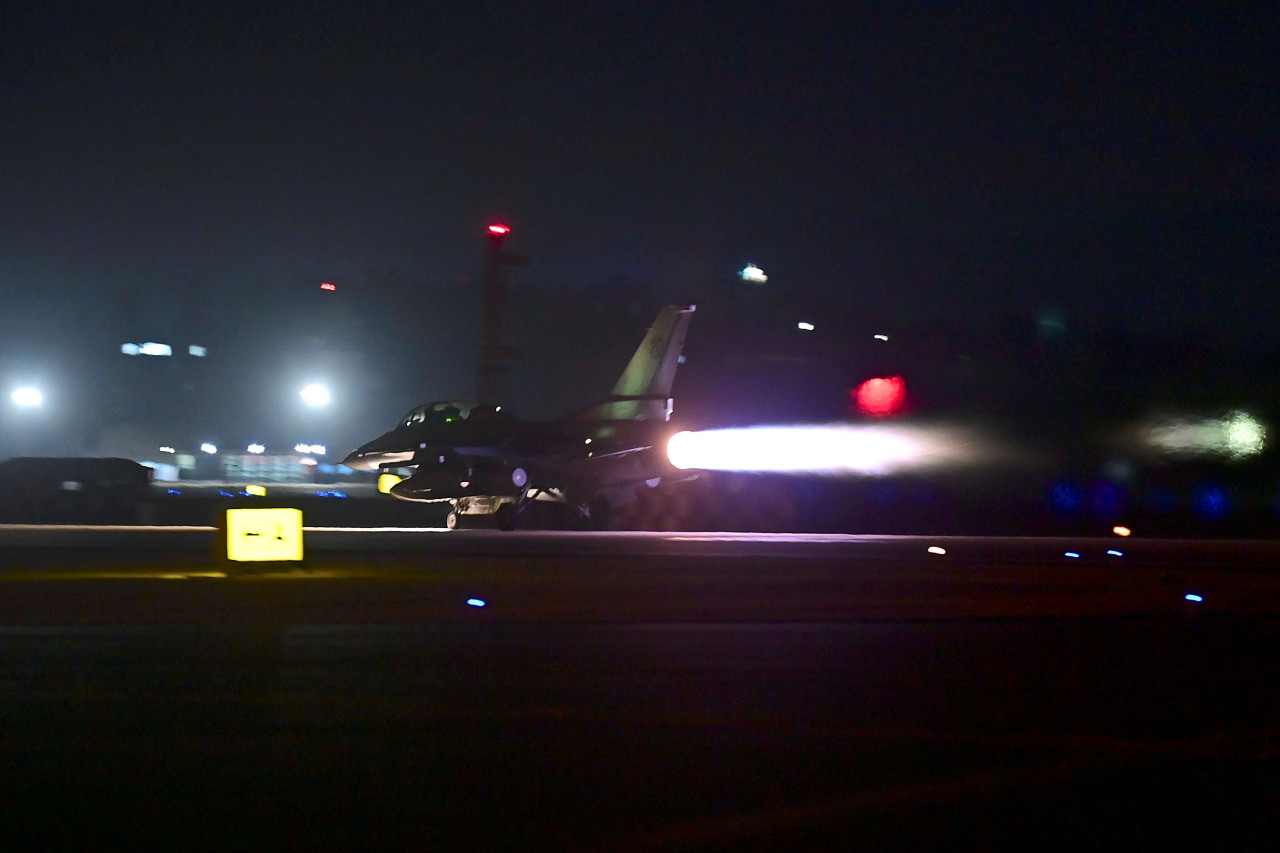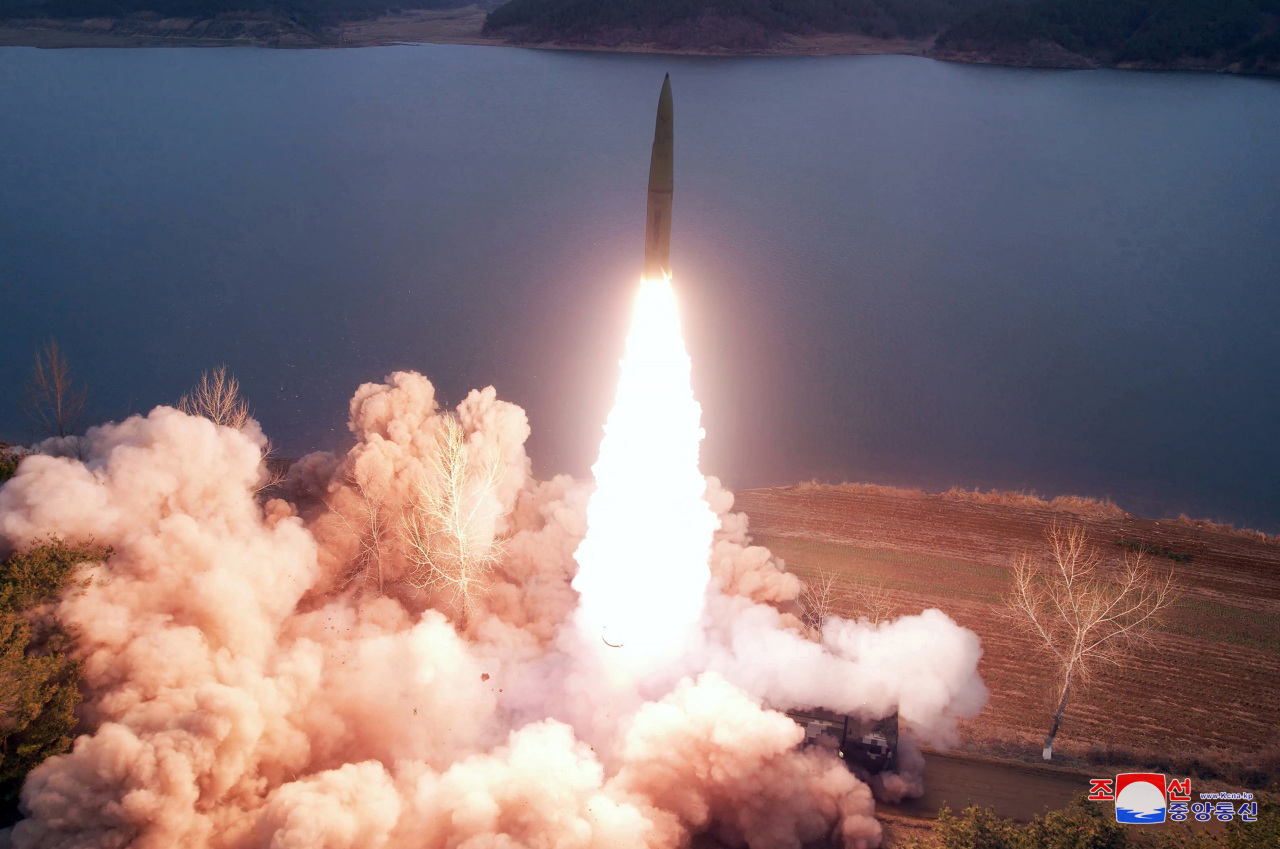S. Korean Air Force conducts nonstop aerial drills amid NK missile launches
By Ji Da-gyumPublished : March 15, 2023 - 18:05

The air combat exercises, conducted from 8 a.m. Tuesday to 8 p.m. Wednesday, were designed to improve the readiness posture for war as well as strategic and tactical operations to ensure sustainability in battle.
The main goals were to gain air supremacy preemptively, which is essential for dominating the battlefield during wartime, and to neutralize the core of enemy military strength by flying combat aircraft with maximum weapons loads without a break.
Air Force fighter jets armed with weapons and missiles made emergency takeoffs and practiced “eliminating enemy threats in simulated wartime situations” during air combat exercises.
The fighter jets staged drills to suppress and destroy virtual enemy aircraft and air defenses, and struck enemy key facilities and time-critical targets, according to the Air Force. Combat aircraft conducted “tactical takeoff and landing drills” at air bases while avoiding airborne threats posed by the enemy.
The South Korean Air Force’s battle exercises came days after North Korean state media reported that the country’s Hwasong artillery unit, responsible for important operations and missions, conducted a “fire assault drill” on March 9. The North Korean military simulated striking air bases in South Korean territory with close-range ballistic missiles.
South Korea and the US on Monday began their longest-running Freedom Shield exercise redesigned to strengthen defense and response capabilities against escalating threats from North Korea. The allies have agreed to stage around 20 field training exercises, including amphibious landing drills, in connection with the Freedom Shield exercise.
On March 6, around 400 South Korean and US army personnel kicked off a 12-day river crossing exercise of emplacing floating bridges and practicing interoperability in simulated contingency situations near the inter-Korean border in Yeoncheon County, Gyeonggi Province. The South Korean and US forces practiced building a pontoon bridge to cross the Imjin River -- which flows from North Korea into South Korea across the Demilitarized Zone -- in three hours.
US State Department spokesperson Ned Price on Monday underscored that North Korea’s belligerent acts of endangering the security environment in Northeast Asia and the surrounding Indo-Pacific region have driven the allies to step up military exercises, which are longstanding, routine and defensive in nature.

North Korea launched two ballistic missiles from the area of Jangyon County, South Hwanghae Province, toward waters off its east coast on Tuesday morning, according to the South Korean military.
North Korean state media on Wednesday claimed that the missile launches were a “demonstrated drill” staged by a missile unit of the Korean People’s Army in charge of an important operational task on the western front.
The photos released by state media showed that KN-23 solid-propellant short-range ballistic missiles were fired.
The 11th fire assault company fired two “ground-to-ground missiles in a medium-range system” to educate military subunits. The South Korean military said the missiles had traveled around 620 kilometers.
Yang Uk, a research fellow in national security at the Asan Institute for Policy Studies think tank in Seoul, assessed that the North Korean military unit that deployed the KN-23 missiles had conducted live-fire drills, given that North Korean state media labeled the missile launches as a “demonstration drill for education.”
“As a military unit generally stages live-fire drills to enhance its operational capabilities, North Korea intended to show off the stable deployment and operation of the KN-23,” Yang said.
Yang also pointed out that Hwanghae Province is the optimal region for striking any target in the entire South Korean territory with the KN-23 and missiles equivalent to the KN-23. Tuesday’s launches mark the first time that North Korea has fired missiles from Jangyon County, which is south of the island of Chodo. The island is the northernmost point of the inter-Korean maritime buffer zone on the West Sea.
“North Korea’s choice of Jangyon County in South Hwanghae Province as the launch site aimed to send a warning message that it can strike anywhere on the Korean Peninsula,” Yang said.
South Korean Defense Minister Lee Jong-sup said Wednesday that the allies “should further strengthen military exercises” as North Korea has been continuing its “grave provocations” by continuously launching missiles, during his visit to CP Tango, a US-controlled wartime command bunker complex.








![[KH Explains] How should Korea adjust its trade defenses against Chinese EVs?](http://res.heraldm.com/phpwas/restmb_idxmake.php?idx=644&simg=/content/image/2024/04/15/20240415050562_0.jpg&u=20240415144419)











![[Today’s K-pop] Stray Kids to return soon: report](http://res.heraldm.com/phpwas/restmb_idxmake.php?idx=642&simg=/content/image/2024/04/16/20240416050713_0.jpg&u=)